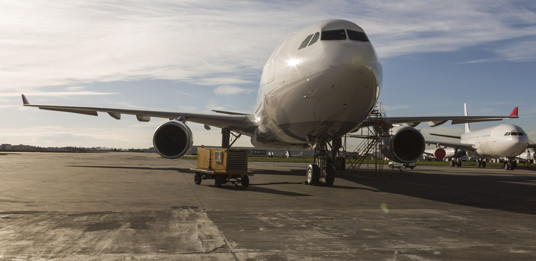CT401 Certificate Course
Command the Skies with Confidence and Collaboration
Prepare to broaden your horizons and elevate your career with our CT401 Certificate Course, meticulously designed for those destined to be a part of the prestigious crews of large international airlines or elite charter operators. This course is your gateway to mastering the skies aboard the magnificent Airbus A330, a symbol of aerospace excellence and one of the most revered multi-aisle aircraft in the world.
Engage in an immersive learning experience that prepares you to thrive in large, multiple-crew environments, coordinating with up to 18 crew members. This program empowers you with the skills to ensure impeccable service, flawless safety standards, and harmonious teamwork on every flight.
Upon the culmination of your journey with us, you will be awarded the Inflight Institute's Certificate of Completion. This certificate is more than just an acknowledgment—it's a testament to your rigorous training, your unwavering commitment, and your readiness to take on the skies. Opt for the convenience of a digital certificate to promptly present your credentials to potential employers, or choose to commemorate your accomplishment with a professionally printed certificate. With the CT401 Certificate Course, your career is set to take off on an international scale. Join us, and become the epitome of aviation excellence with the Inflight Institute. The world awaits!
This course applies to airlines such as...
- Air Transat
- Delta Airlines
- Hawaiian Airlines
- US Airways
- Aer Lingus (Ireland)
- Aeroflot (Russia
- Air Berlin
- Air China
- Air France
- Air Canada
- Alitalia
- Emirates Airlines
- Etihad Airways
- KLM (Netherlands)
- Qantas (Australia)
- TAP (Portugal)
- Turkish Airlines
- Virgin Australia
- …and more!

Course Outline
-
History of Flight
- What is a Cabin Crew Member
- History of Cabin Crew
- Theory of Flight
- Staying in the Air
- How Far We Can Fly
- ATC Their Role
- Global Geography (Continents)
- Time Zones
- 24 Hour Clock
-
Aviation Terminology
- Designator Codes (Airline & City)
- Phonetic Alphabet
- Acronyms

-
Regulations
- Around the World
- Regulations at Work
- Cabin Crew Manuals
- Amendments and Revisions
- Inspectors
-
A Day in the Life...
- Preparing for Duty
- Drug and Alcohol Policy
- Personal Image
- Personal Grooming Standards
-
Uniform Policy
- Looking Professional
- Requirements for Duty
-
At the Airport
- Check-In
- Check-In Duties
- Minimum Crew
- Chain of Command
-
One Crew Concept
- Crew Resource Management
- Importance of Effective Communication
- Verbal and Non-Verbal Communication
- Briefings
- Crew Briefings
-
Going to the Aircraft/Aircraft Type
- Categories of Aircraft
- Aircraft Type
- Crew Baggage
- Pre-flight Check
- Purpose of Equipment
- List of Equipment
- Minimum Equipment List
-
Standard Safety Procedures
- Screening of Passengers and Crew
- General Security Principles
- Dangerous Goods
-
Boarding
- Pre-Boarding
- List of Special Needs
- Deportees
- Prisoners and Escorts
- Special Needs Passenger Briefing
-
General Boarding
- Apron Safety
- Passenger Seating
-
Passenger Handling
- Customer Service
- Types of Complaints
- Abusive/Disruptive Passengers
- Failure to Comply
- Denied Boarding
- Captain's Authority
-
Freight and Baggage
- Carry-on Baggage
- Animals in the Cabin
- Baggage Stowage

-
Passenger Briefings
- Announcements and Techniques
- Electronic Devices
- Types of Devices
- Why Are There Restrictions?
- Reporting Device Interference
- Window Exit Briefings
-
Taxi
- Demonstration
- Visual Checks
- Flight Deck Communication
- Crew Seating
- Cabin Crew Stations
- Signals
- Silent Review
- Critical Phases of Flight
- Statistics
- Sterile Flight Deck
-
Inflight
- Take-Off
- Ordinance Signs

-
Inflight Service
- First Class Service
- Business Class Service
- Economy Class Service
- Flight Deck Service and Protocol
- The Glass Cockpit
- Jumpseat Authorization
- Service on the Ground
- Liquor Service
- Intoxicated Passengers
- World Standards on Disruptions
- Admittance – Locking of Flight Deck Door
- Safe Work Habits
-
Being Prepared
- Inflight Turbulence
- Pressurization Problems
- Pressurization System
- How It's Maintained
- Oxygen and the Body
- Rapid Decompression
- Engine Problems
- Propeller Abnormalities
- Time of Useful Consciousness
- Medical Issues
- Oxygen Administration
- Crew Incapacitation
- Pilot Jumpseats
-
Emergency Situations
- Inflight Fires
- How Fires Work
- Types of Fires-Classes
- Smoke and or Fumes
- Fire Detection
- Where Fires Can Happen
- Firefighting
- Cargo Firefighting
-
Other Types of Inflight Emergency
- Bomb Threats
- Hijacking

-
Preparing for an Emergency
- Emergency Briefings
- Emergency Landing Checklist
- Crew Coordination
- Briefing of Passengers
- Brace Positions
- Commands
- Purpose
- Techniques
- The Words
-
Categories of Landings
- When to Evacuate
- How to Evacuate
-
Post Evacuation
- Post Evacuation Procedures
- Duties
- Help on the Scene
-
Post Crash Survival
- Wilderness Survival
- Sea Survival
- Tropical/Jungle Survival
- Desert Survival
- Arctic Survival
-
Back in the Air
- Descent
- Duties upon Descent
-
Landing/Taxi-In
- Post Landing Duties
-
Deplaning
- Customs and Immigration
- Fueling With Passengers Onboard
- Gate and Apron Emergencies
- Aircraft Surface Contamination
- WHMIS
-
Flight Termination
- Overnights
- Logistics
- Conduct
- Personal Security
-
Flight Safety
- What is Flight Safety?
- Crew Responsibilities
- Some Examples
-
Conclusion
- Health and Wellness
- Eating Right
- Eating on the Run
- Exercise
- Jet Lag
- Deep Vein Thrombosis
- Medical Issues
-
Getting a Job
- Who Are My Potential Employers?
- Resume Preparation
- Interview Techniques
- Job Bank